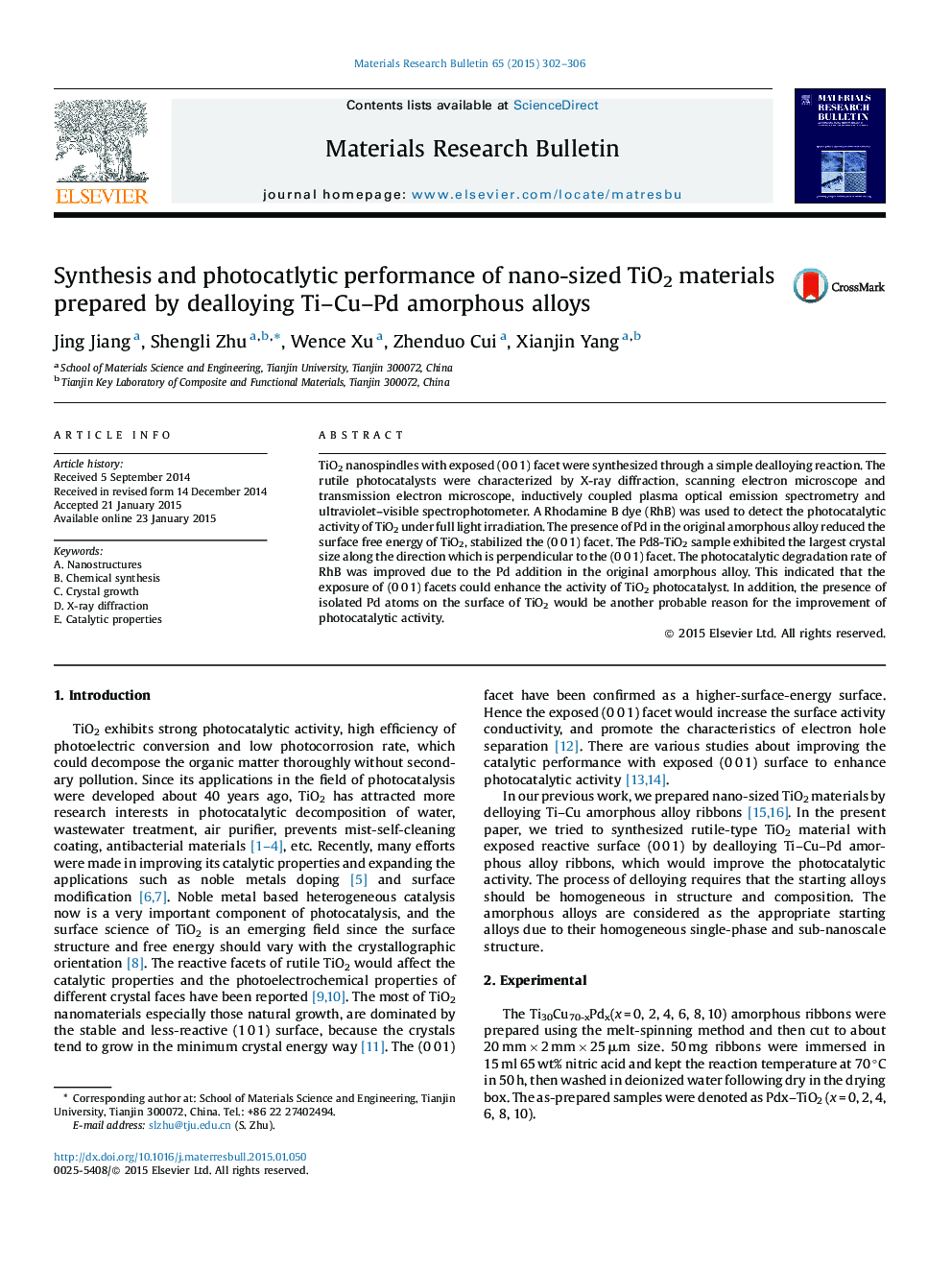| Article ID | Journal | Published Year | Pages | File Type |
|---|---|---|---|---|
| 1487705 | Materials Research Bulletin | 2015 | 5 Pages |
•TiO2 nanospindles were synthesized by dealloying Ti–Cu–Pd amorphous alloy.•Pd significantly enhanced the exposure of high-energy (0 0 1) facet of TiO2.•TiO2 with high-energy (0 0 1) facet showed good photocatalytic activity.
TiO2 nanospindles with exposed (0 0 1) facet were synthesized through a simple dealloying reaction. The rutile photocatalysts were characterized by X-ray diffraction, scanning electron microscope and transmission electron microscope, inductively coupled plasma optical emission spectrometry and ultraviolet–visible spectrophotometer. A Rhodamine B dye (RhB) was used to detect the photocatalytic activity of TiO2 under full light irradiation. The presence of Pd in the original amorphous alloy reduced the surface free energy of TiO2, stabilized the (0 0 1) facet. The Pd8-TiO2 sample exhibited the largest crystal size along the direction which is perpendicular to the (0 0 1) facet. The photocatalytic degradation rate of RhB was improved due to the Pd addition in the original amorphous alloy. This indicated that the exposure of (0 0 1) facets could enhance the activity of TiO2 photocatalyst. In addition, the presence of isolated Pd atoms on the surface of TiO2 would be another probable reason for the improvement of photocatalytic activity.
Graphical abstractFigure optionsDownload full-size imageDownload as PowerPoint slide
